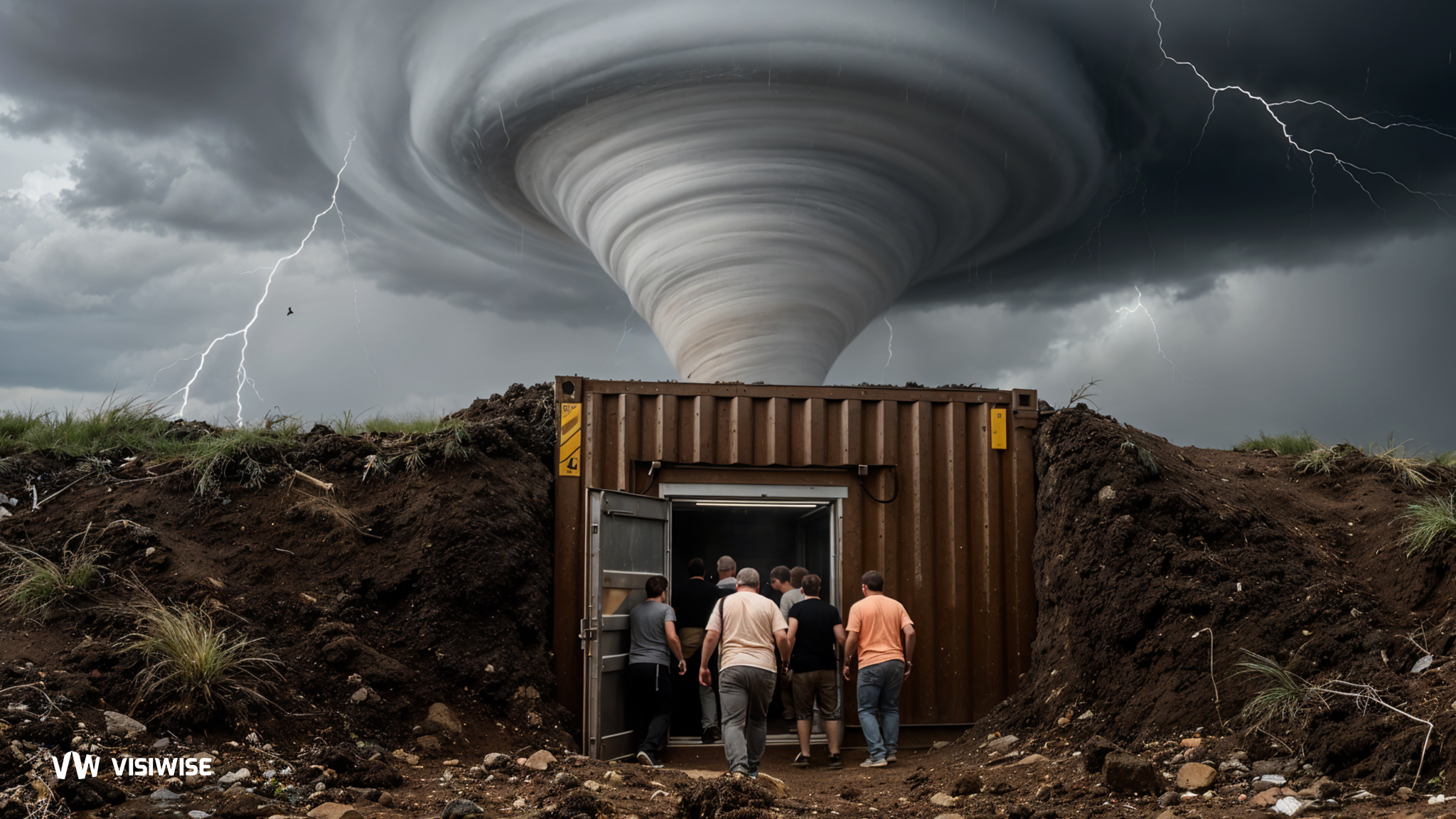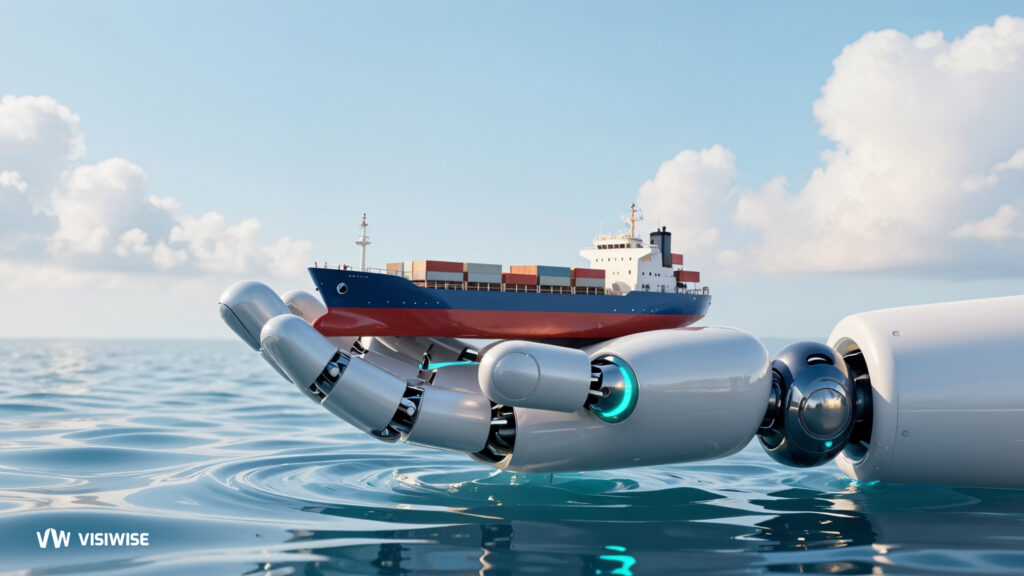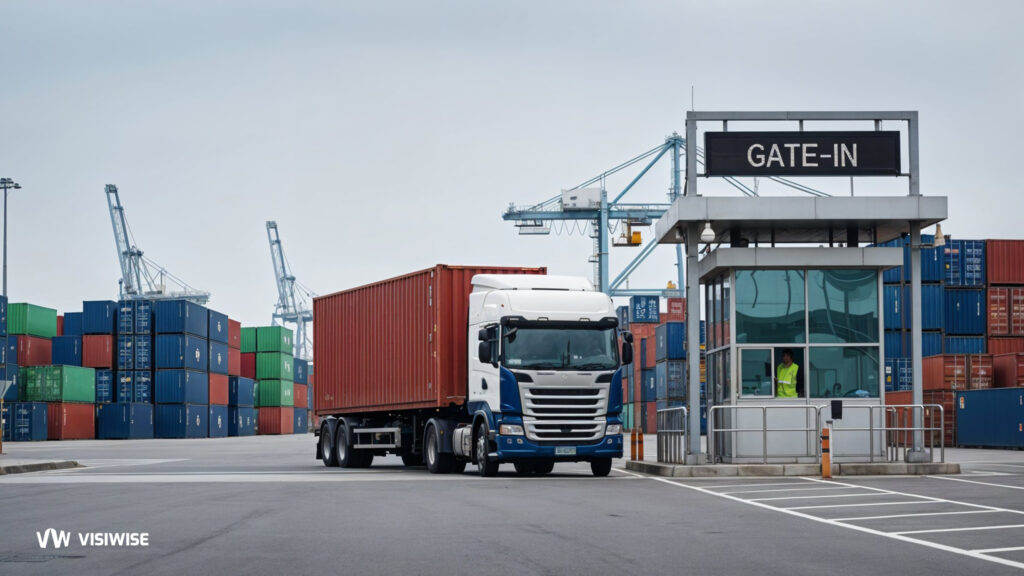As tornado seasons grow longer and storms intensify, many Americans are searching for reliable protection that won’t break the bank. If you’ve ever wondered whether those rugged shipping containers you see on cargo ships could become your family’s lifeline during a storm, you’re onto something. Those rugged shipping containers you see everywhere? They’re not just for cargo anymore. With the right know-how, these steel boxes can become your family’s ultimate storm bunker – tough as nails and surprisingly affordable. But here’s the deal: you can’t just park one in your yard and hope for the best. It takes some smart upgrades to turn that industrial box into a proper life-saving shelter.
Whether you’re in Tornado Alley or just want peace of mind, this guide will help you cut through the hype and build something that’ll actually keep your family safe when the sky turns black.
Why Shipping Containers? The Unbeatable Advantages
Let me tell you why so many families are turning to shipping containers for storm protection – and no, it’s not just because they look cool in your backyard. These steel boxes are basically the superheroes of the shelter world, and here’s why:
Imagine something so tough it can:
- Get tossed around on ocean waves for weeks
- Survive hurricane-force winds while carrying tons of cargo
- Withstand saltwater corrosion like it’s nothing
That’s the magic of shipping containers. They’re basically indestructible metal fortresses – exactly what you want when Mother Nature throws a tantrum.
Here’s why smart homeowners love them:
💰 Budget-Friendly Protection – Costs about half what you’d pay for a traditional concrete shelter (more money left for emergency supplies!)
⏱️ Instant Availability – No waiting for contractors or concrete to cure – just modify and you’re protected
🏠 2-in-1 Solution – Be your storm shelter today, storage unit tomorrow, maybe even a man cave next month
🚚 Take It With You – Moving? Unlike underground shelters, your container shelter comes along for the ride
But (and this is important) – you can’t just plop down a container and call it safe. There are some crucial upgrades needed to turn this steel box into a life-saving shelter. Let me walk you through them…
Essential Modifications: Don’t Risk Your Life by Skipping These
I’ve seen well-meaning homeowners assume a plain container is storm-proof—a dangerous misconception. Here’s what you must do before trusting your life to one:
1. Anchoring: Your First Line of Defense
- Above-ground? Bolt to a 6+ inch concrete slab with heavy-duty anchors
- Partially buried? Use helical piles or concrete deadmen to prevent shifting
- Never leave it unsecured—a loose container becomes a deadly projectile
2. Structural Reinforcements
- Add steel cross-bracing inside to prevent collapse
- Weld extra steel plating at impact points (especially the roof)
- Replace factory doors with FEMA-compliant steel storm doors
3. Debris Protection
- Cover exposed sides with earth berms, concrete panels, or sandbags
- Install impact-resistant window covers if adding ventilation openings
Pro Tip: If burying your container, waterproofing is non-negotiable—apply sealant and install a French drain around it.
Above Ground vs. Buried: Which is Safer for Your Area?
This decision could mean life or death depending on your location. Let’s break it down:
Above-Ground Advantages
✅ Faster installation – No excavation needed
✅ Accessible – Critical for elderly or disabled family members
✅ No flooding risk – Unlike buried shelters
Above-Ground Challenges
❌ More exposed to wind forces and debris
❌ Requires more insulation for extreme temperatures
Buried/Below-Grade Benefits
✅ Superior protection – Earth absorbs wind energy
✅ Natural insulation – Stays cooler in summer, warmer in winter
Buried Drawbacks
❌ Higher cost – Excavation and waterproofing add expense
❌ Potential flooding – Requires sump pump in wet climates
Best Compromise? A partially buried container (1/3 underground) offers protection while remaining accessible.
Making It Livable: Survival Essentials You Can’t Overlook
A shelter that protects you from the storm but becomes unbearable within minutes fails its purpose. Here’s how to make yours functional:
Air Supply (The Most Overlooked Risk)
- Install two vents minimum (high and low for airflow) with fine mesh screens
- Include a battery-powered ventilation fan – CO2 builds up fast with people inside
Temperature Control
- Spray foam insulation is the gold standard for steel containers
- Reflective barrier insulation helps in extreme heat
Emergency Preparedness
- Lighting: LED strips with backup batteries
- Seating: Fold-down benches or padded mats
- Supplies: Keep water, first-aid, and a NOAA weather radio inside
Smart Addition: A composting toilet bucket – because when nature calls during a 3-hour storm, you’ll be grateful.
Will It Really Withstand an EF5 Tornado? The Hard Truth
While shipping containers are incredibly strong, an unmodified one will fail in direct hit from an EF5. Here’s how to maximize safety:
Wind Resistance Upgrades
- FEMA standards require surviving 250+ mph winds
- Most stock containers withstand 100-150 mph
- Solution: Add internal steel skeleton bracing
Debris Impact Protection
- Tornadoes hurl cars, trees, and structural beams
- Your shelter must stop a 15-pound 2×4 at 100+ mph
- Solution: Outer layer of 1/2″ steel plate or 12″ earth berm
Critical Note: For maximum safety, have your design reviewed by a structural engineer familiar with FEMA P-361 standards.
Legal Requirements & Insurance Implications
Before you start shopping for containers, there’s some paperwork you’ll want to handle – and trust me, skipping this part could cost you big time. Here’s the real deal:
📜 Permit Problems: Your local building department likely requires permits for permanent shelters (yes, even for "portable" containers). I’ve seen folks forced to dismantle their shelters because they didn’t check first.
🔍 Insurance Gotchas: Most policies won’t cover damage from uncertified shelters. Worse? If your DIY bunker fails during a storm, it might void your entire homeowner’s policy.
🏆 The Gold Standard: Only FEMA-compliant shelters qualify for insurance discounts in many states. That certification sticker could mean the difference between getting reimbursed and getting nothing.
Pro Tip: Call your insurance agent before buying anything. A 10-minute conversation now could save you thousands later when you need to file a claim.
Is a Shipping Container Shelter Right for You?
✅ Ideal if you…
- Want more affordable protection than concrete bunkers
- Need a multi-use space (storage + shelter)
- Live where soil conditions prevent underground options
❌ Not recommended if…
- You expect a stock container to work without modifications
- Your property has high water table or flooding issues
- You’re unwilling to invest in proper engineering
Final Thought
When properly modified, a shipping container shelter provides exceptional protection at a reasonable cost. But cutting corners risks lives—this is one DIY project where professional guidance pays for itself in safety.



